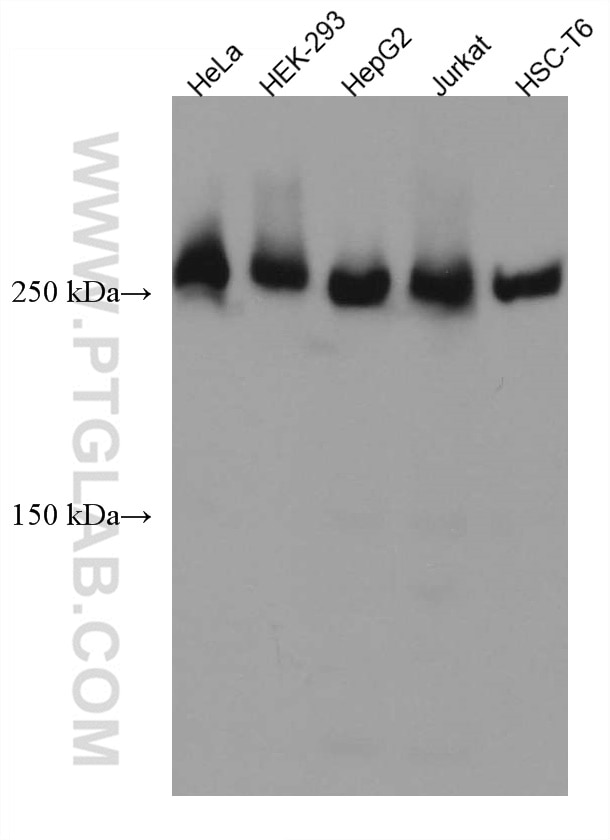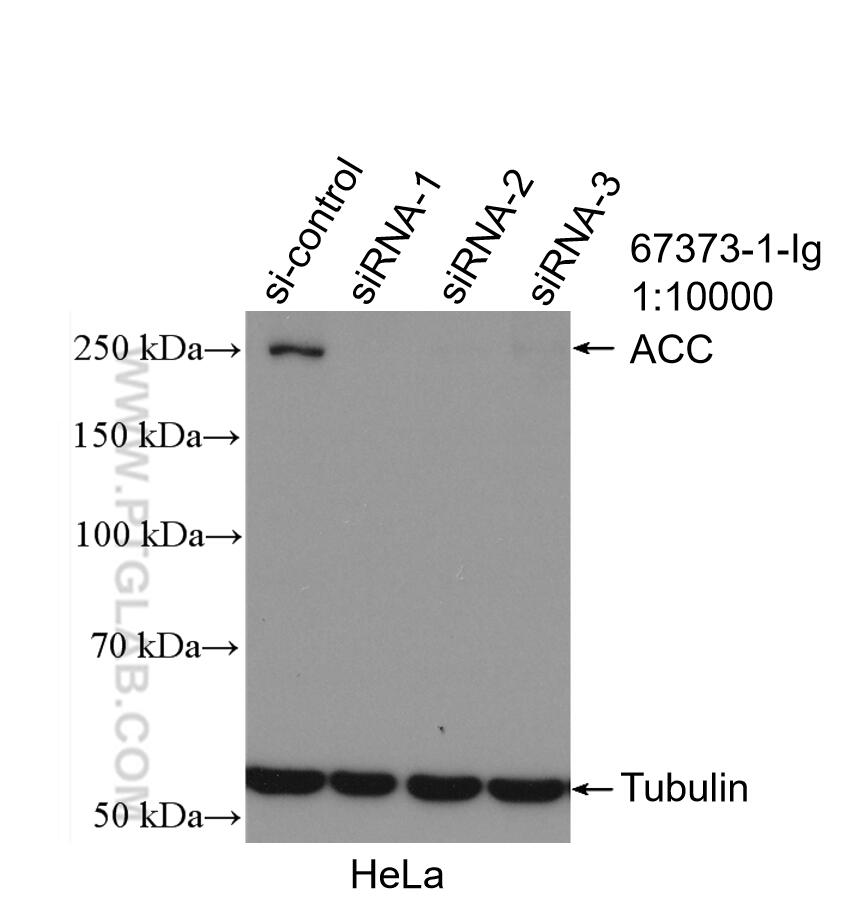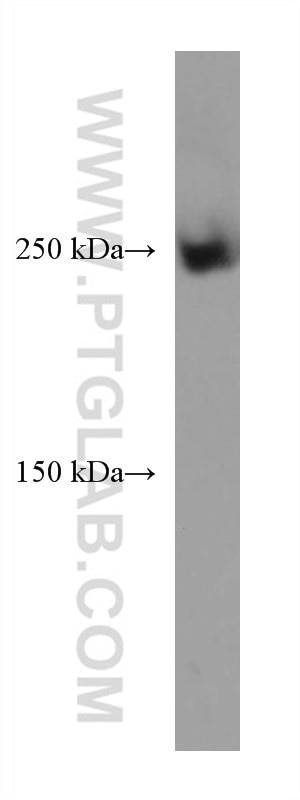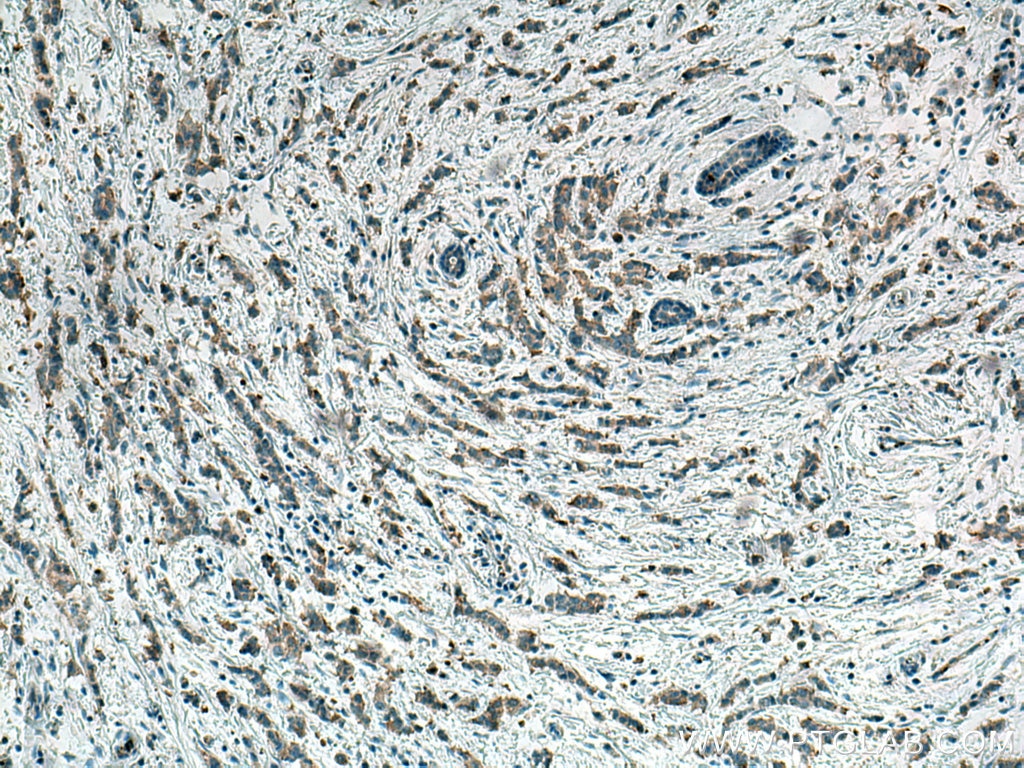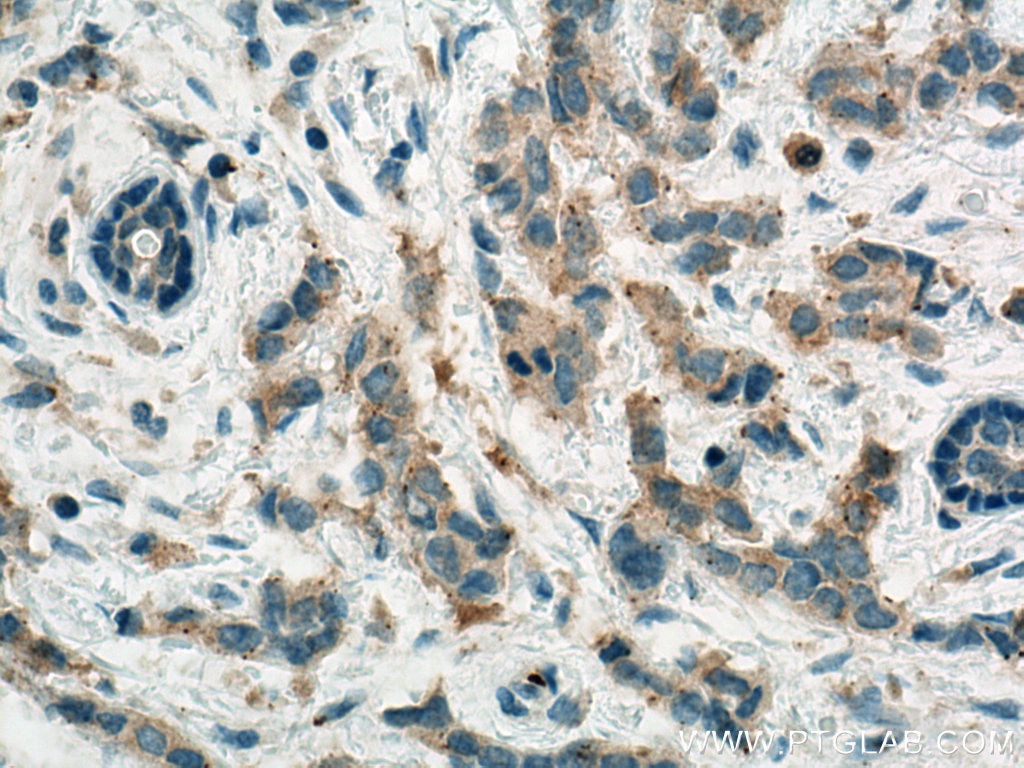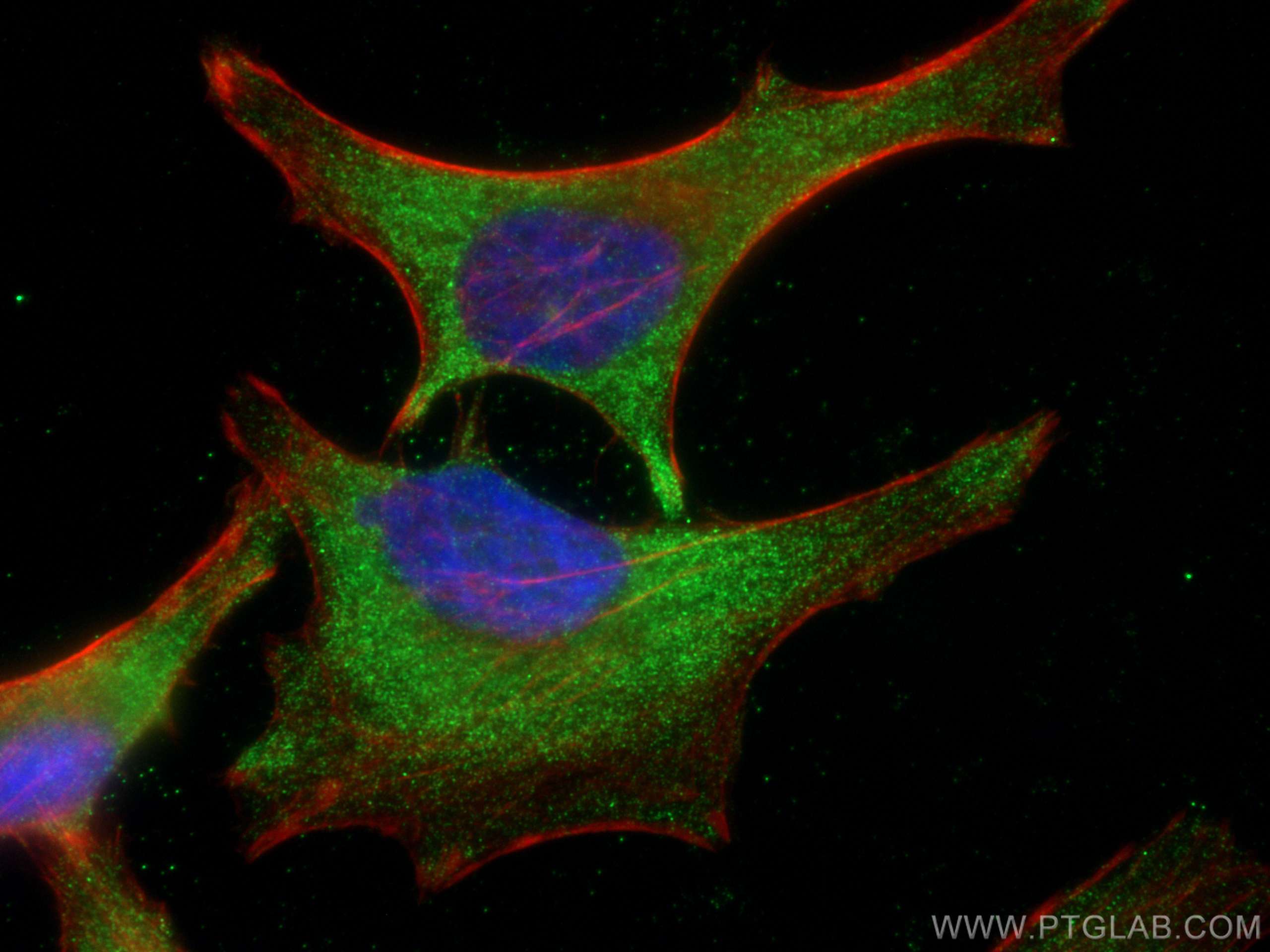- Phare
- Validé par KD/KO
Anticorps Monoclonal anti-ACC1
ACC1 Monoclonal Antibody for WB, IHC, IF/ICC, ELISA
Hôte / Isotype
Mouse / IgG2a
Réactivité testée
Humain, rat, souris et plus (3)
Applications
WB, IHC, IF/ICC, ELISA
Conjugaison
Non conjugué
CloneNo.
1A11G10
N° de cat : 67373-1-Ig
Synonymes
Galerie de données de validation
Applications testées
| Résultats positifs en WB | cellules HeLa, cellules HEK-293, cellules HepG2, cellules HSC-T6, cellules Jurkat, cellules NIH/3T3 |
| Résultats positifs en IHC | tissu de cancer du sein humain, il est suggéré de démasquer l'antigène avec un tampon de TE buffer pH 9.0; (*) À défaut, 'le démasquage de l'antigène peut être 'effectué avec un tampon citrate pH 6,0. |
| Résultats positifs en IF/ICC | cellules HeLa, |
Dilution recommandée
| Application | Dilution |
|---|---|
| Western Blot (WB) | WB : 1:10000-1:50000 |
| Immunohistochimie (IHC) | IHC : 1:500-1:2000 |
| Immunofluorescence (IF)/ICC | IF/ICC : 1:400-1:1600 |
| It is recommended that this reagent should be titrated in each testing system to obtain optimal results. | |
| Sample-dependent, check data in validation data gallery | |
Applications publiées
| WB | See 36 publications below |
| IHC | See 1 publications below |
| IF | See 1 publications below |
Informations sur le produit
67373-1-Ig cible ACC1 dans les applications de WB, IHC, IF/ICC, ELISA et montre une réactivité avec des échantillons Humain, rat, souris
| Réactivité | Humain, rat, souris |
| Réactivité citée | rat, Chèvre, Humain, singe, souris, Hamster |
| Hôte / Isotype | Mouse / IgG2a |
| Clonalité | Monoclonal |
| Type | Anticorps |
| Immunogène | ACC1 Protéine recombinante Ag17503 |
| Nom complet | acetyl-Coenzyme A carboxylase alpha |
| Masse moléculaire calculée | 2383 aa, 275 kDa |
| Poids moléculaire observé | 250-270 kDa |
| Numéro d’acquisition GenBank | BC137287 |
| Symbole du gène | Acetyl-CoA Carboxylase 1 |
| Identification du gène (NCBI) | 31 |
| Conjugaison | Non conjugué |
| Forme | Liquide |
| Méthode de purification | Purification par protéine A |
| Tampon de stockage | PBS with 0.02% sodium azide and 50% glycerol |
| Conditions de stockage | Stocker à -20°C. Stable pendant un an après l'expédition. L'aliquotage n'est pas nécessaire pour le stockage à -20oC Les 20ul contiennent 0,1% de BSA. |
Informations générales
ACACA(Acetyl-CoA carboxylase 1, ACC), also named as ACAC, ACC1 and ACCA, belongs to the biotin containing enzyme family. It catalyzes the synthesis of malonyl-CoA, which is an intermediate substrate playing a pivotal role in the regulation of fatty acid metabolism and energy production. ACACA is involved in the biosynthesis of fatty acids, and malonyl-CoA produced is used as a building block to extend the chain length of fatty acids by fatty acid synthase (FAS)(PMID:19900410). It has 4 isoforms produced by alternative promoter usage with the molecular weight between 260 kDa and 270 kDa.
Protocole
| Product Specific Protocols | |
|---|---|
| WB protocol for ACC1 antibody 67373-1-Ig | Download protocol |
| IHC protocol for ACC1 antibody 67373-1-Ig | Download protocol |
| IF protocol for ACC1 antibody 67373-1-Ig | Download protocol |
| Standard Protocols | |
|---|---|
| Click here to view our Standard Protocols |
Publications
| Species | Application | Title |
|---|---|---|
Autophagy Periplocin suppresses the growth of colorectal cancer cells by triggering LGALS3 (galectin 3)-mediated lysophagy | ||
EMBO J Rab2A-mediated Golgi-lipid droplet interactions support very-low-density lipoprotein secretion in hepatocytes | ||
Theranostics Herb-sourced emodin inhibits angiogenesis of breast cancer by targeting VEGFA transcription. | ||
Phytomedicine Garlic-derived exosomes regulate PFKFB3 expression to relieve liver dysfunction in high-fat diet-fed mice via macrophage-hepatocyte crosstalk |
Avis
The reviews below have been submitted by verified Proteintech customers who received an incentive for providing their feedback.
FH Parijat (Verified Customer) (09-09-2023) | Goof antibody
|
FH Priya (Verified Customer) (06-21-2023) | Used this antibody for Caco2 cells and mice tissue
|
